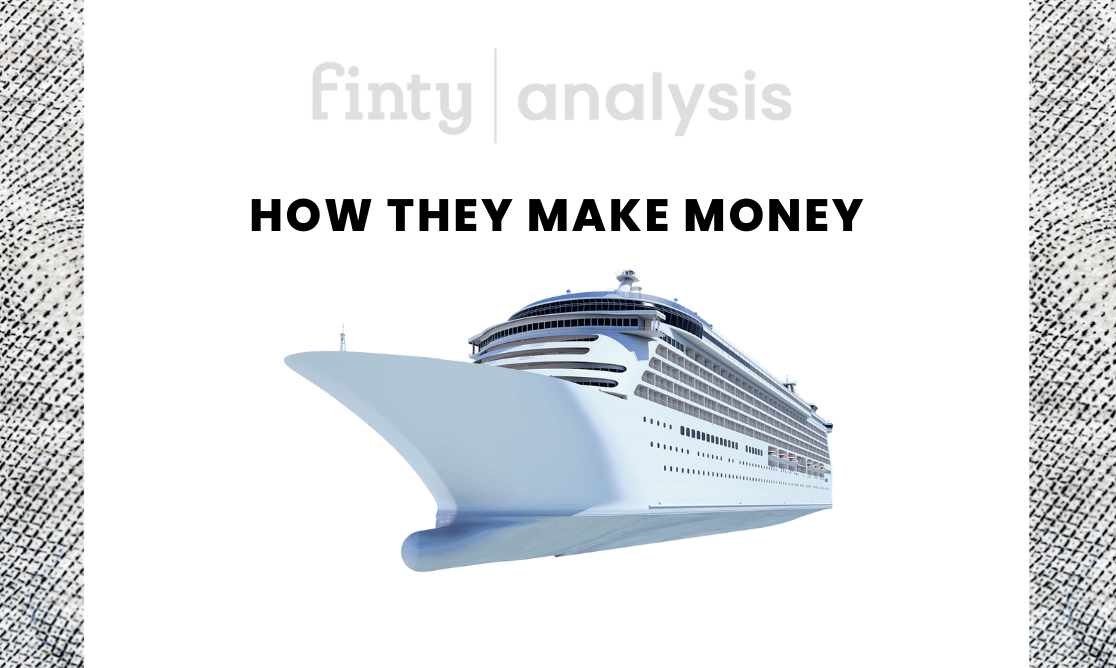The modern cruise industry has its roots in the early 20th century, with the founding of companies such as Cunard Line and White Star Line. Today, some of the most prominent companies in the industry include Royal Caribbean Cruises, Carnival Corporation, and Norwegian Cruise Line Holdings.
Each year, millions of passengers set sail on cruise ships enjoying the experience of onboard activities and amenities and high-quality dining.
Globally the industry employs hundreds of thousands of workers.

Coming up next
What does the modern cruise industry do?
The core business functions of cruise liners include providing passengers with transportation to various destinations and various onboard amenities and activities. This includes everything from dining and entertainment to spa services and fitness facilities. Additionally, many cruise ships offer shore excursions, allowing passengers to explore the ports of call they visit.
How does the modern cruise industry work?
Cruise companies operate by owning or leasing a fleet of ships, which they then use to offer a variety of itineraries to passengers. These itineraries can range from short weekend cruises to longer, multi-week voyages. Cruise companies typically market and sell these cruises through various channels, such as travel agents, online platforms, and directly to consumers. Once on board, passengers can access the ship's amenities and activities and any shore excursions they have booked.
How do cruise lines make money?
Cruise lines make money primarily from ticket sales, customers spending aboard their ships while cruising, sales of add-on travel services such as insurance and excursions, advertising, and sponsorship deals with brands.
Ticket sales
The primary source of revenue for cruise companies is the sale of tickets for cruises. This includes the cost of the cruise itself and any additional fees such as port charges, taxes, and gratuities. They offer different categories of rooms at various prices.
Onboard spending
Once on board, passengers can spend money on a variety of additional services and amenities, such as specialized restaurants where meals are on a menu and are not part of the rest of the buffet offerings, spa treatments, and shore excursions, which are not included in the price of the ticket. This is regarded as the most significant form of revenue for cruise liners, so filling the ship with passengers eager to pay for the extras is vital.
Advertising and sponsorship
Cruise companies may also generate revenue through advertising and sponsorship deals; for example, companies may pay for their brand to be advertised on the cruise ship.
What part of the cruise industry is most profitable?
The most profitable part of the cruise industry is the luxury segment, characterized by larger ships, more amenities, and higher ticket prices. This industry segment tends to be less price-sensitive, allowing cruise companies to charge more for their services. Additionally, the older demographic of luxury cruisers tends to spend more on board than other segments of the market.
Future growth engine
The cruise industry is expected to continue growing in the coming years as more people become interested in taking cruises and as new technologies and trends emerge. One potential growth engine for the industry is the increased interest in sustainable and eco-friendly cruises, which can appeal to a new generation of socially and environmentally conscious consumers.
Risks
- Outbreaks of sickness. The cruise industry is vulnerable to disease outbreaks, such as norovirus, which can lead to the cancelation of cruises and damage the reputation of the cruise companies. The coronavirus wreaked untold havoc on the cruise industry, with its recovery only taking place in mid-2020.
- The threat of pirates. The cruise industry is also at risk from the threat of pirates, particularly in areas where piracy is more common.
- Economic downturns. Economic downturns can also impact the cruise industry, as people may be less likely to take expensive vacations during tough economic times.
- Natural disasters. Natural disasters such as hurricanes, typhoons, and tsunamis can cause major disruptions to cruise itineraries and result in significant financial losses for cruise companies.
- Environmental concerns. The cruise industry faces increasing pressure from environmentalists and governments to reduce its environmental impact, which could result in increased regulation and higher costs for cruise companies.
- Poor experience. Passengers consistently report issues with crowded ships and long lines for activities and services, as well as dissatisfaction with the added costs of additional services and activities, such as shore excursions, spa treatments, and dining.
Competitors
- Carnival Corporation. One of the largest cruise companies in the world, with a fleet of over 100 ships across multiple brands, including Carnival Cruise Line, Princess Cruises, and Holland America Line.
- Norwegian Cruise Line Holdings. A global cruise company that operates the Norwegian Cruise Line, Oceania Cruises, and Regent Seven Seas Cruises brands.
- MSC Cruises. A Switzerland-based company that operates a fleet of over 20 ships, primarily in Europe and South America.
- Royal Caribbean. One of the world's largest fleets of cruise ships.
- Celebrity Cruises. A premium cruise brand that is part of Royal Caribbean Cruises, with over 15 ships.
- Holland America Line. A premium cruise brand that is also part of Carnival Corporation, with a fleet of over 15 ships.

